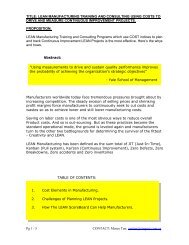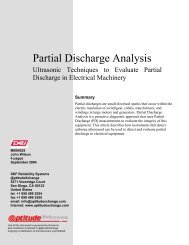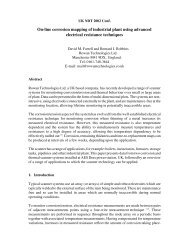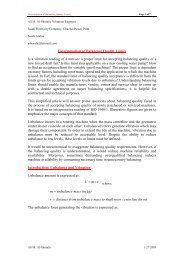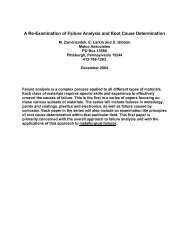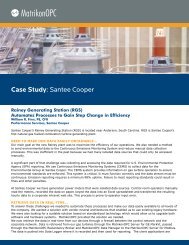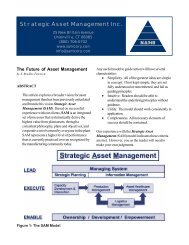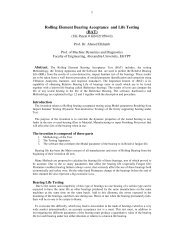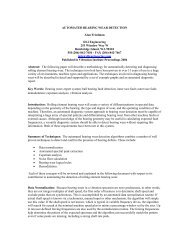Investigating Material and Component Failure - TCR Engineering ...
Investigating Material and Component Failure - TCR Engineering ...
Investigating Material and Component Failure - TCR Engineering ...
You also want an ePaper? Increase the reach of your titles
YUMPU automatically turns print PDFs into web optimized ePapers that Google loves.
FASTENER FAILURES<br />
Threaded fasteners are considered to be any threaded part that may be removed<br />
after assembly. Nuts <strong>and</strong> bolts are commonly used threaded fasteners. Rivets,<br />
pin fasteners, <strong>and</strong> special purpose fasteners are some other commonly used<br />
fasteners. Some common locations for fastener failures are listed below:<br />
• Head to shank failure<br />
• First thread inside the nut<br />
• Transition from thread to shank<br />
A fastener may experience either static loading or fatigue loading. Static loading<br />
may be tension, shear, bending, or torsion. These static loading conditions may<br />
occur in combination. One example of fatigue loading is vibration. In addition to<br />
overload <strong>and</strong> fatigue, some other common reasons for fastener failures include<br />
environmental issues, manufacturing discrepancies, <strong>and</strong> improper use or<br />
incorrect installation.<br />
Some common questions concerning fasteners are listed below:<br />
• How were the fasteners torqued<br />
• In what order were fasteners tightened<br />
• What is the best way to verify the torque on fasteners<br />
• How does torque value vary over time<br />
Fatigue is one of the most common failure modes for threaded fasteners.<br />
Fretting failures may result from small movements between adjacent surfaces.<br />
Additionally, atmospheric corrosion, liquid immersion corrosion, galvanic<br />
corrosion, crevice corrosion, stress corrosion cracking, <strong>and</strong> hydrogen damage<br />
may contribute to fastener failure<br />
<strong>Material</strong> selection, heat treatment, cutting or rolling threads, manufacturing,<br />
assembly, <strong>and</strong> design are some of the factors that effect fastener failures.<br />
<strong>Failure</strong> analysis can determine the cause of the fastener failure <strong>and</strong> determine<br />
the primary or contributing causes of fastener failure.<br />
<strong>Failure</strong> <strong>and</strong> Root Cause Analysis White Paper by <strong>TCR</strong> <strong>Engineering</strong>, India 13



